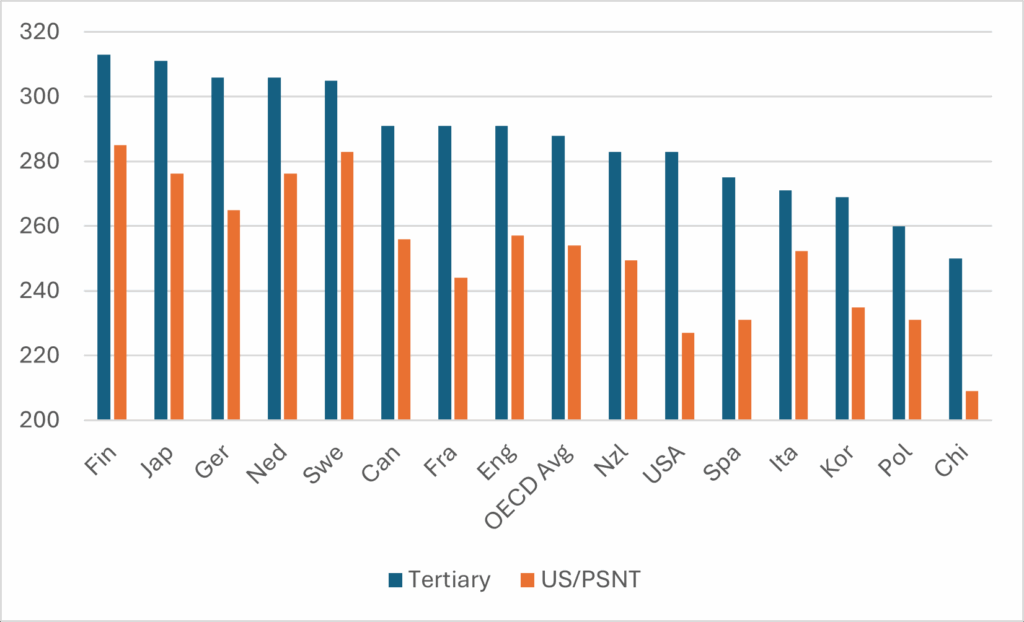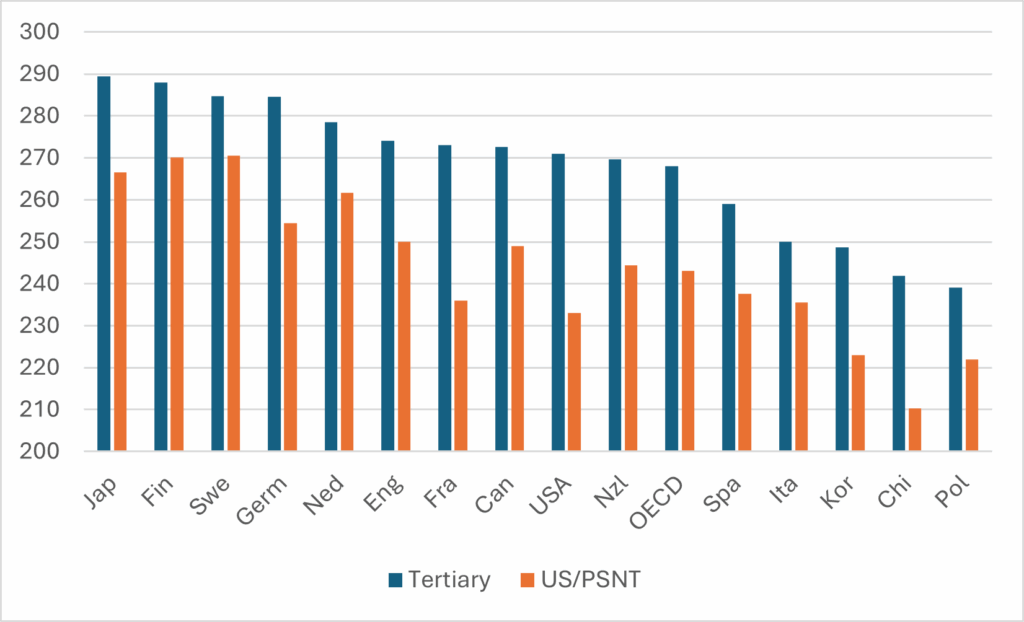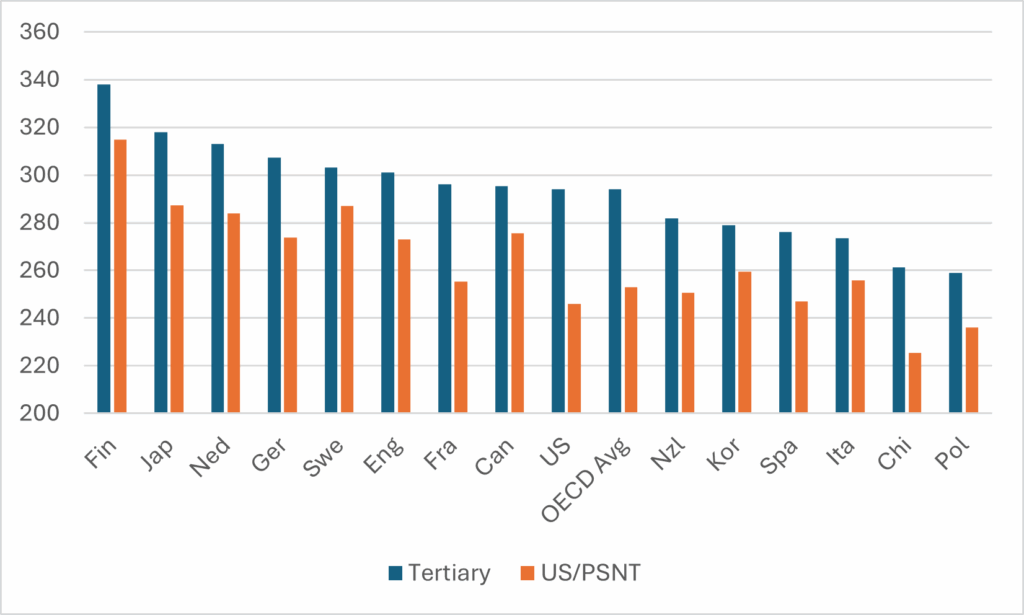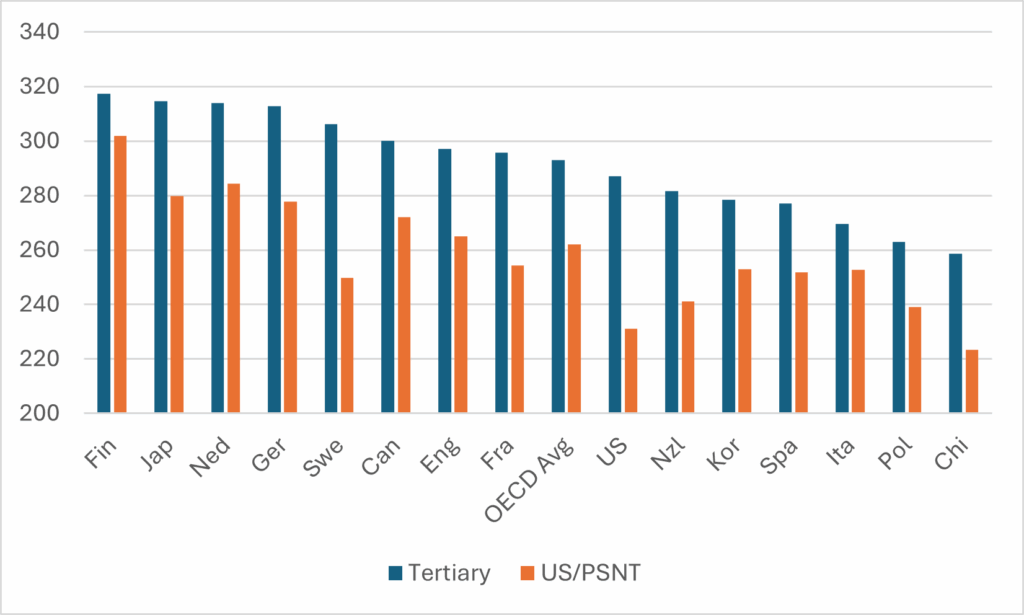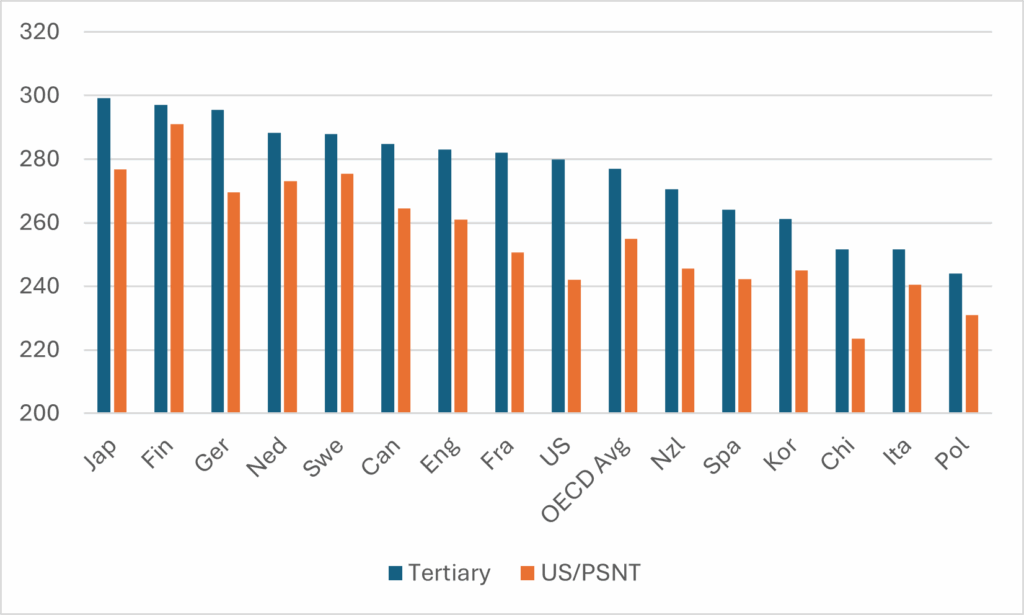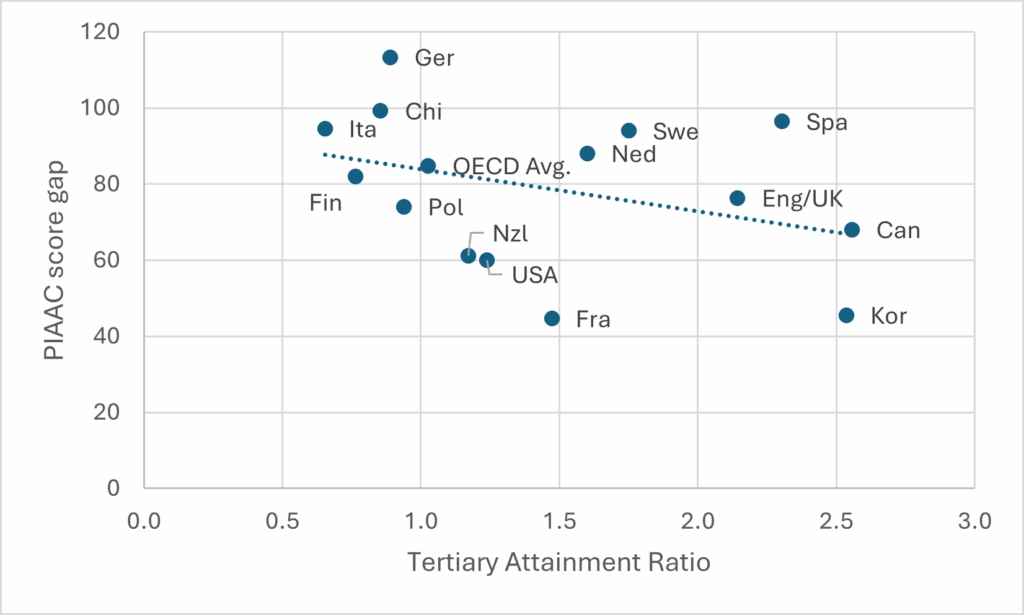Just before I headed out on a work/vacation trip (I’m in Costa Rica today), the Government of Alberta dropped the report of the Expert Panel on Post-Secondary Institution Funding and Alberta’s Competitiveness, which I had previewed back here when the panel was formed about a year ago. So, on the way to the airport, I dashed off this blog to give you all the skinny.
First: it’s a good report! Might be the most sensible report on PSE that’s come out in Canada for quite some time, not least for the ways the Panel went beyond its mandate and actually addressed the elephant in the room, which was “how is Alberta going to educate this huge wave of students heading its way?” – a point which the government pointedly omitted from the Panel’s terms of reference. There are a few things in here which I think are a bit under-thought, which I will address below. But in the main, this is a report which you could apply in almost every province and we’d have a much better system than we have now.
The report starts by laying out what it calls a “framework” for policy, which should:
- Provide a space for every qualified Alberta student who wants to pursue post-secondary education (though, this could be quite expensive…I think it was a deliberate political choice to not include any costing in this document)
- Focus on outcomes, providing incentives and rewarding performance in three key areas: teaching and student experience, research, and the impact institutions have on the communities they serve.
- Set tuition in a manner that balances the importance of certainty for students with the reality of increasing costs in institutions.
- Encourage government to reconsider the extent of controls it exercises over institutions, and reduce unnecessary red tape, so as to provide institutions with the autonomy and flexibility they need.
See? All eminently sensible. But, of course, the devil is in the details, which the panel outlines in eleven specific recommendations. Seven of these are so sensible that they barely require comment. These include recommendation 3 (improve funding and administration of apprenticeship programs), recommendation 4 (fund IT infrastructure on a long-term basis rather than via ongoing operating funding), recommendation 6 (bring back student grants!), recommendation 7 (more international students!), recommendation 8 (government to back off, provide institutions with more autonomy), recommendation 9 (less red tape for institutions), and recommendation 10 (faster government approval of new programs).
So far, so good. The remaining four recommendations present some complications, though. I’ll go through them one by one.
Recommendation 1 suggests that Alberta should adopt an actual funding formula to divide public spending between institutions (it is currently one of the largest jurisdictions in the world without one; to my knowledge only BC is bigger). It further suggests that the formula consists of three components: weighted enrolment, (i.e. weighted to recognize that clinical education costs more than laboratory education which costs more than classroom education), performance (assuming the indicators are smart and measurable, which the panel suggests might not be the case for all the indicators in the current performance-based funding arrangement), and a “base” funding component.
All fine in principle, but two points. First, when you have institutions as disparate in size as Alberta does (50K at University of Alberta to 1300 at the Alberta University of the Arts), a “base” component is hard to design properly. The idea is to recognize that institutions have fixed costs that probably won’t get covered properly under an enrolment-weighted formula alone but that’s hard to do in a way that actually works but doesn’t wildly subvert any normal principles of equity (I know, I tried sketching one for the Manitoba College system a decade ago, and it’s hard). Second – and somewhat relatedly – the Panel skips over the bit where a previous government within the last decade tried to do develop a formula much like this one and discovered that any sensible enrolment-weighted system would probably eviscerate two or three of the smaller regional colleges, which was seen as impractical from a political POV (the Minister of the Day trashed the report without publishing it, which is why you may not have heard this story). The math and politics won’t have changed, so getting this idea up and running might be easier said than done.
Onwards to recommendation 2, which asks the government to introduce targeted, time-limited funding initiatives to a) attract top research talent, b) support innovation and developing technology, and c) provide incentives and support for collaboration among institutions. The ideas are fine, but the logic for time-limiting the measure seems obscure to me.
Now to recommendation 5, on tuition fees. This is where the report is at its hand-waviest, and I think there is a lot of subtext here which is not fully explained. Currently, there is a 2% cap on all tuition increases. The panel wants that to be maintained for students once they have begun their studies, so as to give them “price stability”. But they also think that institutions should be given “discretion” to raise tuition for first-year students more radically year-by-year, because institutions need money.
Here’s where it gets handwave-y. The panel does not advocate for de-regulation; whether out of conviction or political realism I can’t say. Rather, it suggests that the Alberta government should set “maximum allowable tuition” every year, on a field of study basis, and institutions should have the freedom to set tuition fees up to that maximum. I think the logic at work here is the same as that seen in the UK in both the 2006 and 2012 fee reforms, which was that if the government set a maximum, institutions would have space to “compete on price” and the big prestigious universities would be able to charge a quality premium. As we saw in the UK, though, this is a naïve assumption: since price tends to act as a proxy for quality in the public mind (because God forbid anyone actually try to measure quality), what happens in these situations is that all institutions will quickly drive to the max, meaning that in effect, it’s still government setting the fees, with all the politics that entails (decent chance the maximum will be $0 if/when the NDP return to power). I am not sure this has been well thought-through.
Anyways, on to the final recommendation, which is that on Equity, Diversity and Inclusion (which, it should be noted, was also not part of the Panel’s mandate). In the discussion section, it cites mostly American examples, argues for “institutional neutrality” with respect to political issues (this means no boycotts, apparently, although I suspect if the panel told Alberta’s Ukrainian community that U of A was going to be forced to maintain relations with Russian universities on grounds of institutional neutrality, there would be riots). It also makes veiled references to “federal research grant requirements, which require explicit commitments to equity, diversity and inclusion as part of their selection and approval process…[which] can limit academic freedom and direct the focus of research”. So far, so Alberta.
But then if you look at the actual recommendation, there are two points to make. The first is that the panel chooses to place “Indigenization” as a separate category from the rest of EDI (they don’t quite say Indigenization = good, EDI = bad, but you’d be forgiven for thinking that this is in fact the panel’s view). And the second is that the actual recommendation is pretty anodyne. It’s written in such a way that allows the anti-woke to claim that we need constant vigilance and for institutions to be able to hit the snooze button and go back to sleep because they already do what is being recommended. Not quite a nothing burger, but pretty close.
In any event: it’s a solid report and while I think there will be one or two twists and complications in implementation, the direction in which it points is a promising one. Hopefully the government will accept the report and get to work on it as soon as possible.


